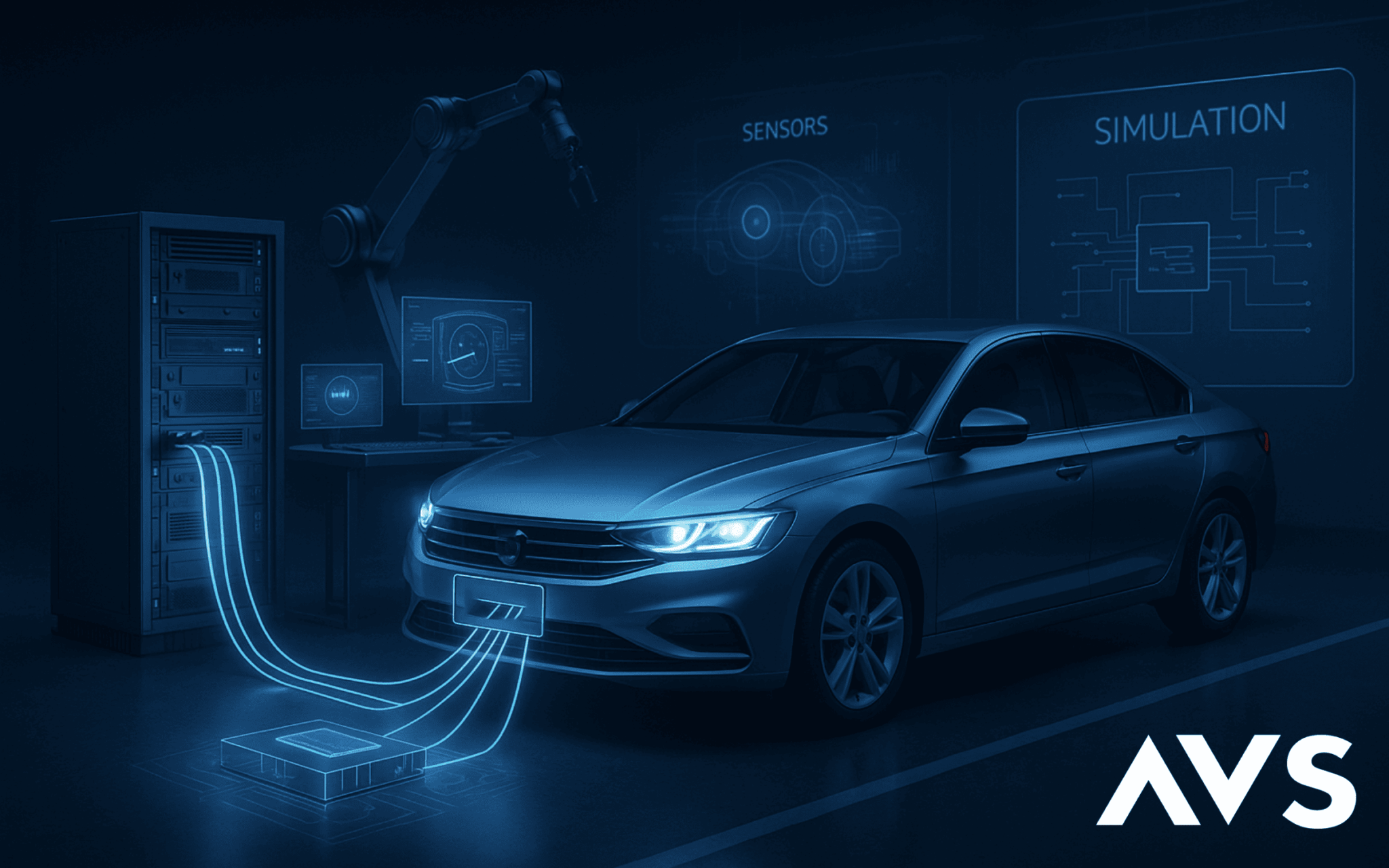In the automotive industry, every line of embedded code, every actuator, and every safety-critical function must go through rigorous testing and validation. As complexity increases, so does the need for tools that ensure reliable, repeatable, and realistic test environments. This is where Hardware-in-the-Loop (HIL) comes in.
HIL is no longer just a test bench for simple I/O validation — it has become a strategic enabler in modern vehicle development. When paired with a high-fidelity simulation platform like SCANeR™, it allows OEMs and Tier-1 suppliers to bring real hardware into realistic driving scenarios, without physical risks or high testing costs.
What is Hardware-in-the-Loop (HIL) testing?
Hardware-in-the-Loop testing connects a real electronic control unit (ECU) or sensor to a real-time simulation that emulates the vehicle, road, environment, and even other road users.
The ECU receives inputs from the simulation (speed, objects detected, traffic conditions) and responds as it would in a real vehicle — for example, by issuing a braking command or triggering a driver alert. This closed-loop interaction allows engineers to:
- Detect integration issues early
- Reduce the need for physical prototypes
- Test edge cases and critical failures
- Automate regression testing under controlled conditions
Why HIL is now essential
As modern vehicles evolve into software-defined platforms (SDVs), traditional testing methods fall short. ADAS functions, EV powertrains, over-the-air updates — all require continuous, scalable validation.
You can’t rely solely on road testing for every possible case — it’s expensive, risky, and often impossible to reproduce rare or dangerous situations. HIL enables safe, repeatable, real-time validation of embedded systems, making it a cornerstone of agile V&V pipelines.
The AVSimulation approach: SCANeR™ at the core of your HIL workflow
SCANeR™ is a modular, open simulation platform designed for high-performance, real-time applications — perfectly suited for HIL integration.
It supports native connectivity with major HIL platforms like dSPACE, NI, RTMaps, and other real-time operating systems or custom setups.
With SCANeR™, you can provide your ECU under test with:
- Accurate vehicle dynamics models
- Realistic road environments, traffic and weather
- High-fidelity virtual sensors (camera, radar, lidar)
- Photorealistic 3D scenes powered by Unreal Engine
The system ensures synchronized I/O signals that meet real-time constraints, enabling safe, reactive closed-loop operation.
Use case: ADAS ECU validation with SCANeR™ and HIL
Let’s take the example of an Automatic Emergency Braking (AEB) ECU:
- A Euro NCAP test scenario is executed in SCANeR™ (e.g., pedestrian crossing unexpectedly)
- Virtual sensors detect the obstacle and send signals to the physical ECU
- The ECU processes the data and triggers a braking command
- SCANeR™ simulates vehicle reaction and feedback
- Timing, braking distance, and decision-making are analyzed in detail
This test can be repeated with different weather, traffic, or sensor conditions, ensuring comprehensive validation — without ever putting a real vehicle or person at risk.
Beyond ADAS: HIL use cases across domains
HIL testing extends well beyond ADAS. It is widely used to validate:
- Electric powertrain control units
- Thermal management systems
- Intelligent lighting systems such as adaptive headlights
- Diagnostic, cybersecurity and safety logic (SOTIF, ISO 26262)
As vehicle functions become more software-centric, HIL becomes essential to simulate system interactions at both the hardware and software level, especially for SDV architectures.
What makes a reliable HIL environment?
To make the most of HIL testing, your setup should include:
- Accurate vehicle dynamics models (see our vehicle dynamics solutions)
- Reliable real-time synchronization
- Scenario automation via Python, XML or APIs
- Full observability of inputs, outputs, and internal states
SCANeR™ is designed with these needs in mind, offering a robust, scalable foundation for real-time closed-loop testing across all vehicle domains.
Conclusion: a strategic tool for modern automotive validation
Hardware-in-the-Loop testing is much more than a development step — it’s a validation accelerator. It helps detect faults earlier, improve robustness, reduce physical test campaigns, and gain confidence in critical embedded functions.
Combined with SCANeR™, it becomes a powerful pillar in your virtual testing strategy — enabling faster development cycles, safer designs, and better engineering decisions.


